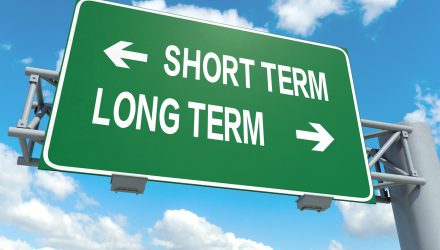“We’ve noted some weakness in international fixed income due to the strengthening dollar and low global interest rates,” said Droller.
Even with the risk-on sentiment witnessed during the height of the bull market, Droller noticed a shift from high yield and longer duration bond funds.
“On the fixed income side, flows were positive for nearly all Morningstar categories for the first three quarters with the exception of some of the riskier sectors like high yield and long-term bond ETFs,” said Droller.
Options for Short Duration
Investors can limit exposure to long-term debt with ETFs like the SPDR Portfolio Short Term Corp Bd ETF (NYSEArca: SPSB), which seeks to provide investment results that correspond to the performance of the Bloomberg Barclays U.S. 1-3 Year Corporate Bond Index. SPSB invests at least 80 percent of its total assets in securities designed to measure the performance of the short-termed U.S. corporate bond market. Ideally, shorter-term bond issues with maturities of three to four years are ideal to minimize duration exposure should the bull market enter another correction phase.
Another short-term bond ETF option is the iShares 1-3 Year Credit Bond ETF (NASDAQ: CSJ), which tracks the investment results of the Bloomberg Barclays U.S. 1-3 Year Credit Bond Index where 90 percent of its assets will be allocated towards a mix of investment-grade corporate debt and sovereign, supranational, local authority, and non-U.S. agency bonds that are U.S. dollar-denominated and have a remaining maturity of greater than one year and less than or equal to three years–this shorter duration is beneficial during recessionary environments or deeper corrections in the market.
For more real estate trends, visit ETFTrends.com
